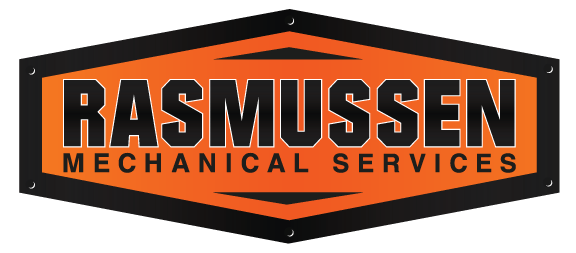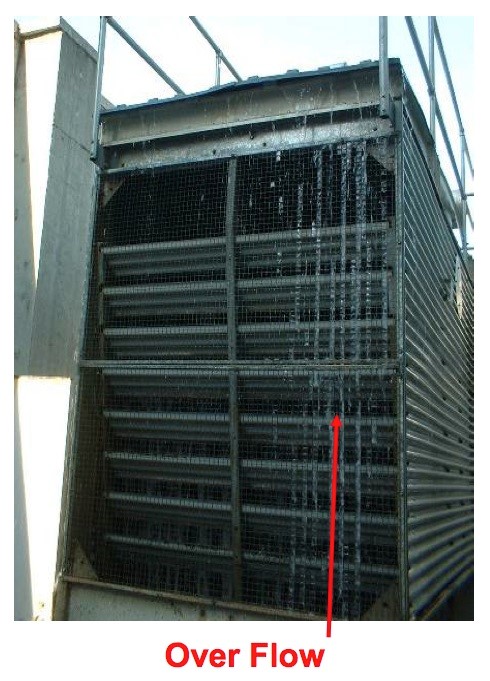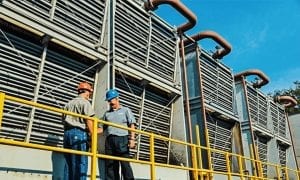 When thinking about where you can improve operational efficiency, facility managers rarely jump to cooling towers. This however, can be a hugely inefficient part of your operation. We find cooling tower maintenance is a great way to improve operational efficiency as well as extend the life of your equipment.
When thinking about where you can improve operational efficiency, facility managers rarely jump to cooling towers. This however, can be a hugely inefficient part of your operation. We find cooling tower maintenance is a great way to improve operational efficiency as well as extend the life of your equipment.
Cooling towers are heat exchangers that are commonly used to remove heat from water leaving the chiller or air conditioning condensers. There are many different styles of cooling towers, such as cross flow, counter flow, induced draft and forced draft. These units will have slightly different maintenance requirements so be sure to always follow your manufacturers recommendations.
Start-Up Cooling Tower Maintenance Checklist
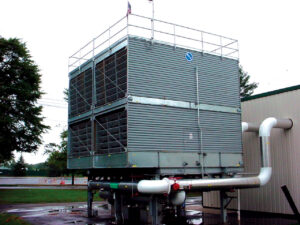 For starting up a cooling tower in the spring time, follow these maintenance steps:
For starting up a cooling tower in the spring time, follow these maintenance steps:
- Clean Debris: Remove leaves, dirt, and other debris from air inlets.
- Flush Cold Water Basin: Flush the cold water basin with strainer screens in place to eliminate sediment.
- Inspect Strainer Screen: Clean and reinstall the strainer screen.
- Float Valve Check: Ensure the mechanical float valve operates freely.
- Inspect Water Distribution: Clean nozzles in the water distribution system and check their orientation.
- Drift Eliminators: Ensure drift eliminators are secure and correctly oriented.
- Fan Belt Maintenance: Adjust fan belt tension as needed (replace annually).
- Lubrication: Lubricate fan shaft bearings before start-up.
- Fan and Pump Checks: Turn fan(s) and pumps by hand to ensure they turn freely.
- Visual Inspection: Examine fan blades for any visible issues.
- Stagnant Water Check: Verify that no stagnant water remains in the system, including “dead legs” in the piping.
- Basin Filling: Manually fill the cold water basin to the overflow connection.
- Float Valve Adjustment: Adjust the mechanical float valve for the correct water level.
- Operational Check: Ensure the fan rotates in the correct direction and measure voltage and current.
- Bleed Valve Adjustment: Set the bleed valve to the proper flow rate.
- Sliding Motor Base: Inspect and grease as needed.
- Clean Components: Clean the pan strainer and flush the pan.
- Operational Check: Inspect the bleed-off valve to ensure it operates correctly.
- Distribution System Check: Review the water distribution system and spray pattern.
- Drift Eliminators: Inspect drift eliminators again.
- Fan Blade Inspection: Look for cracks, missing weights, and vibrations in fan blades.
- Corrosion Check: Inspect sheaves, bushings, fan shafts, and fan hubs for corrosion.
- Screen Maintenance: Check fan screens and inlet louvers; remove any dirt or debris.
Cooling Tower Routine Maintenance Checklist
Here are a few maintenance tasks that should be completed in the summer.
- Pan Strainer Maintenance: Clean the pan strainer.
- Basin Flushing: Flush the cold water basin.
- Bleed-Off Valve Check: Ensure the bleed-off valve is operational.
- Operating Level Adjustment: Adjust the float valve as necessary.
- Water Distribution Review: Inspect the water distribution system and spray pattern.
- Drift Eliminator Check: Reassess the drift eliminators.
- Fan Blade Inspection: Look for cracks and vibrations.
- Corrosion Inspection: Check for corrosion in sheaves, bushings, fan shafts, and fan hubs.
- Lubrication: Lubricate fan shaft bearings.
- Belt Tension Adjustment: Adjust the belt tension.
- Screen and Louver Check: Clean fan screens and inlet louvers.
Cooling Tower Fall Maintenance Checklist (Shutdown)
As you get ready to shut down your unit for the colder months, follow these steps.
- Drain the evaporative cooling unit cold water basin
- The cold water basin should be flushed and cleaned with the suction strainer screens in place.
- Clean and reinstall suction strainer screens.
- The cold water basin drain should be left open.
- Lubricate the fan shaft bearings and motor base adjusting screws.
- The water make up valve needs to be closed.
- All water make-up, overflow and drain piping needs to be drained.
- The finish of the unit should be inspected.
- Clean and refinish as required. Energize motor space heaters. (if equipped)
Cooling Tower Maintenance And Water Flow
We have encouraged a number of facilities to let us examine the flow rates on their cooling towers units. Fortunately and unfortunately for these facilities, we have a high success rate at finding issues. We often find some zones are overflowing, some zones are under flowing and air side velocities are all out-of-whack. This results in units that get nowhere near nameplate performance!
For organizations like ethanol plants and other industrial facilities where summer production is limited by cooling tower output, this can be a huge problem. By re-balancing flows to cooling towers, they will not only increase unit efficiency, but also production capabilities.
In large commercial buildings, inefficiencies in cooling tower performance results in increased cooling bills. This means small tweaks and improvements can result in BIG savings on energy bills.
To measure the water flow, you have to start by using an ultrasonic flow meter. Ultrasonic flow meters work by transmitting ultrasound between two sensors. These offset sensors measure the time it takes for sound to travel between them and determine flow speed. From there you can adjust the flow to meet the requirements of the entire system.
New factory units are sometimes set up to over amp. In fact, we see this in the field all the time! When you’re looking to increase efficiency, cooling tower flow rates are a surprisingly good place to start. We also recommend checking flow rates on any main unit AHU, pumps, cooling towers or chillers on a yearly basis. This will ensure you are getting the performance your unit is designed to achieve.
Legionnaires’ Disease And Maintenance
Legionnaires’ disease is a severe form of pneumonia and has a death rate of 1 in 10 according to the CDC. The disease is most commonly spreads through cooling towers, hot tubs, showers, faucets and water features. By performing routine cooling tower maintenance you can spot stagnant water, perform proper chemical bacterial treatment and help reduce the risk of this disease.
According to an article written by Chardon Laboratories,
“Microbial growth causes numerous problems for your system and your employees. In warm conditions, bacteria and algae proliferate in uncleaned water. Biofilm, a physical film filled with bacteria, can cause micro-biologically influenced corrosion. These mats of bacteria can also harbor disease-causing microbes, such as Legionella. In addition to ongoing use of a bio-dispersant to break up this biofilm layer, a cooling tower cleaning can protect your system from these problems.
OSHA recommends cleaning your cooling tower at least twice a year to prevent the growth of Legionella bacteria. Following this schedule is critical because most evaporative cooling towers maintain warm water at the ideal temperature for bacterial growth. (Between 68 degrees Fahrenheit and 122 degrees Fahrenheit.) Additionally, due to the evaporation of water into the air nearby, workers in the area could breathe in Legionella bacteria. Putting them at risk for the disease.”
COOLING TOWER INSTALLATION
We can help you with your next cooling tower install. We can install natural draft, mechanical draft, crossflow and counterflow cooling towers. Installation will vary depending on size and type but here are a few common installation practices:
-
- System Evaluation: Assess the system and select the appropriate cooling tower.
- Site Preparation: Prepare the site and remove existing towers if necessary.
- Offloading: Safely offload cooling tower components.
- Installation: Set basins, install sump boxes, upper sections, redirectors, louver panels, handrails, ladders, and complete wiring.
- Piping: Finally, install system piping.
The Importance of Regular Cooling Tower Maintenance
Regular cooling tower maintenance is not just about compliance; it significantly impacts your facility’s bottom line. Well-maintained cooling towers operate more efficiently, which translates to lower energy consumption and reduced utility bills. According to industry studies, facilities that invest in proactive cooling tower maintenance can save up to 30% on energy costs. Furthermore, a reliable cooling tower system can reduce the risk of costly breakdowns and unexpected repairs, ensuring uninterrupted operations. By prioritizing routine maintenance, facility managers can enhance their cooling system’s performance, extend equipment lifespan, and contribute to a more sustainable operational environment. This holistic approach not only enhances efficiency but also fosters a safer workplace, reinforcing your commitment to operational excellence.
Contact Us
Ready to improve your cooling tower efficiency? Call us at 1-800-237-3141 or reach out online. We’re here to help!
